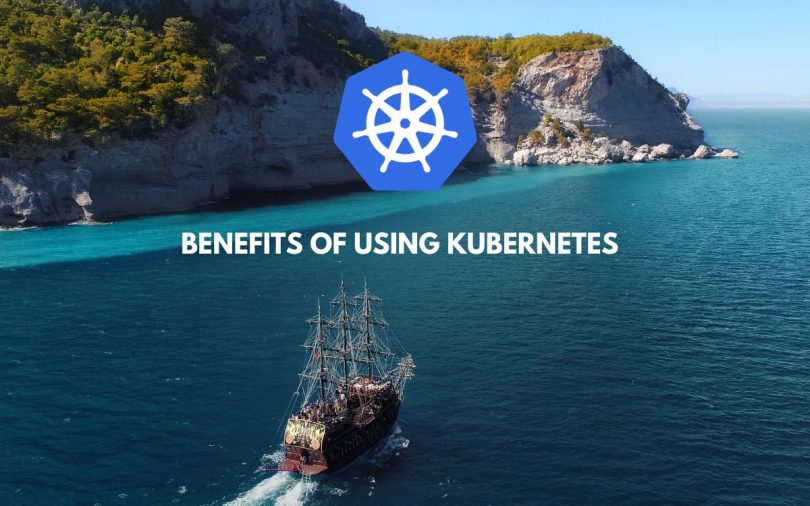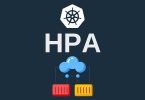Kubernetes is an open-source container orchestration system that automates the deployment, scaling, and management of containerized applications. Here I will write about basic benefits of using Kubernetes and how it can help you improve resource utilization, security, and reliability for your applications.
Benefits of Using Kubernetes
One of the key benefits of Kubernetes is its ability to abstract away the underlying infrastructure, allowing developers to focus on writing code rather than worrying about the details of deploying and managing their applications. This makes it easier to deploy applications in a consistent manner across different environments, such as development, staging, and production.
Kubernetes is built on top of a number of key concepts, including pods, nodes, and clusters.
Pods are the smallest deployable units in Kubernetes and are typically used to host a single containerized application.
Nodes are the underlying machines that host the pods, and clusters are a group of nodes that work together to run the applications.
One of the key features of Kubernetes is its ability to automatically scale applications up or down based on demand. This is accomplished through the use of replicas, which are copies of an application that are run across multiple nodes in a cluster. Kubernetes can also perform rolling updates, allowing developers to deploy new versions of their applications without any downtime.
There are a number of scientific books that cover Kubernetes in detail, including “Kubernetes in Action” by Marko Luksa and “Kubernetes: Up and Running” by Kelsey Hightower, Brian Grant, and Joe Beda.
These books provide a comprehensive overview of Kubernetes, including its architecture, key concepts, and best practices for using it in a production environment.
Kubernetes is a system for automating the deployment, scaling, and management of containerized applications. It is designed to provide a platform-agnostic environment for running applications, allowing them to be easily moved between different environments such as development, staging, and production.
Pods in Kubernetes
At the core of Kubernetes is the concept of a pod, which is the smallest deployable unit in the system. Pods are used to host one or more containers, and can be thought of as the equivalent of a physical machine in a traditional environment. Pods are typically used to host a single application, although it is possible to run multiple related applications in a single pod.
Kubernetes is designed to run on a cluster of nodes, which are the underlying machines that host the pods. A cluster is a group of nodes that work together to run the applications and can span multiple physical or virtual machines. Each node in a cluster runs a number of pods, and the Kubernetes control plane is responsible for scheduling pods onto the nodes in the cluster.

The second great feature Kubernetes is its ability to automatically scale applications up or down based on demand.
This is accomplished through the use of replicas, which are copies of an application that are run across multiple nodes in a cluster.
The Kubernetes control plane is responsible for ensuring that the desired number of replicas are running at all times, and can automatically add or remove replicas as needed.
Scaling
In addition to scaling, Kubernetes also provides a number of other features to help manage containerized applications. This includes rolling updates, which allow developers to deploy new versions of their applications without any downtime, and self-healing, which helps ensure that applications remain running and healthy even in the face of hardware or software failures.
The benefits of using Kubernetes is the ability to allow developers to focus on writing code rather than worrying about the details of deploying and managing their applications. This makes it easier to deploy applications in a consistent manner across different environments, such as development, staging, and production.
Also provides a number of other benefits to developers:
- Improved resource utilization: By running multiple applications on a single node, Kubernetes can help improve resource utilization and reduce costs.
- Enhanced security: Kubernetes provides a number of security features, such as role-based access control and network policies, to help secure applications and the underlying infrastructure.
- Improved reliability: Through features such as self-healing and rolling updates, Kubernetes helps ensure that applications remain running and healthy even in the face of hardware or software failures.
- Easier to troubleshoot: Kubernetes provides a number of tools and features to help troubleshoot issues with applications, such as detailed logs and the ability to roll back to previous versions.
Control plane
In addition to scaling, Kubernetes also provides a number of other features to help manage containerized applications. This includes rolling updates, which allow developers to deploy new versions of their applications without any downtime. Rolling updates work by gradually rolling out the new version of the application to the replicas, while keeping the old version running until the new version has been fully deployed. This helps ensure that there is no disruption to the service during the update process.
Kubernetes is built on top of a number of key components, including the control plane and the nodes. The control plane is responsible for managing the overall state of the cluster, including scheduling pods onto nodes, enforcing policies, and monitoring the health of the cluster. The control plane is made up of a number of components, including the API server, the etcd distributed key-value store, and the scheduler.
The nodes in a Kubernetes cluster are the underlying machines that host the pods. Each node runs a number of pods, as well as a number of other components such as the kubelet, which is responsible for communicating with the control plane and managing the pods on the node, and the container runtime, which is responsible for running the containers within the pods.
Basic components
Kubernetes also includes a number of other components and tools to help manage and deploy applications.
Deployments: A deployment is a declarative way to specify the desired state of an application, including the number of replicas and the desired version of the application. The deployment controller is responsible for ensuring that the application is running in the desired state.
Services: A service is a way to expose an application to other parts of the cluster or to external clients. Services can be exposed using a variety of methods, including a load balancer or a DNS name.
Ingress: An ingress is a way to expose multiple services to the outside world through a single point of entry.
Replicas: Kubernetes provides a number of ways to specify the desired number of replicas for an application. This can be done directly through the deployment configuration, or it can be automated through the use of horizontal pod autoscaler (HPA), which can scale the number of replicas based on metrics such as CPU usage or memory utilization.
Self-healing: Kubernetes also includes a number of self-healing features to help ensure that applications remain running and healthy even in the face of hardware or software failures.
For example, if a pod fails or becomes unresponsive, Kubernetes can automatically restart it or recreate it on a different node in the cluster.
Overall, Kubernetes is a complex system with a number of components and features designed to help manage and deploy containerized applications at scale.









